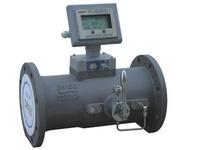 Waist wheel flowmeters, also known as Roots flowmeters, are characterized by a metering chamber in the flowmeter housing. Waist wheel flowmeter selection is generally considered from these four points, that is, according to the nature of the fluid to be measured and the flow conditions to determine the flow sampling device and measuring instrument type and specifications, selection should be fully consistent with the process provided by the instrument Conditions, consider the level of accuracy and economy, consider the safety of the measurement.
Waist wheel flowmeters, also known as Roots flowmeters, are characterized by a metering chamber in the flowmeter housing. Waist wheel flowmeter selection is generally considered from these four points, that is, according to the nature of the fluid to be measured and the flow conditions to determine the flow sampling device and measuring instrument type and specifications, selection should be fully consistent with the process provided by the instrument Conditions, consider the level of accuracy and economy, consider the safety of the measurement. 1, according to the nature of the fluid to be measured and the flow conditions, to determine the type and size of the waist fluid flow meter fluid properties and flow conditions determine the form and specifications of the flow meter. The first selection must consider several key physical and chemical properties of the fluid: the state of the fluid (solid gas or liquid), the conductivity of the fluid, the chemical corrosion of the fluid, and the viscosity of the fluid. Second, we must fully understand the scope of application of various forms of flow meters. The physical and chemical properties of the fluid should be taken into consideration when selecting the type. The fluids in the solid state are generally dust or blocks, and the flowmeters are selected from the three types of impulse flowmeters, belt scales, and track scales. There are many types of flow meters in liquid and gaseous fluids. The general flow meters have series and models that are dedicated to gas measurement. For example, the Coriolis mass flow meters we use have dedicated and gas measurement series models. Poor liquid conditions do not call out corrosion, conduction, and solid particles. In this case, the best choice is to use an electromagnetic flowmeter. Flowmeters that are suitable for high-viscosity reading include oval gear flowmeters, waistwheel flowmeters, scraper flowmeters, target flowmeters, and wedge-shaped flowmeters. They must be determined based on accuracy, economical requirements, and other actual operating conditions. . Finally, for fluids with corrosive fluids, it is necessary to pay attention to the selection of the material for the flowmeter when the fluid is selected. For example, when the electromagnetic flowmeter is used to measure the hydrochloric acid liquid, the electrodes must be used with a helium electrode or the electrodes are easily eroded away.
2. The selection of the waist wheel flowmeter should fully consider the conditions of the table provided by the process.
First, consider the static pressure and temperature of the medium. The static pressure and temperature resistance of the flowmeter are also an important part of ensuring the service life and accuracy of the instrument. The static pressure of the instrument is the degree of pressure resistance. It should be slightly larger than the working pressure of the measured medium. , generally take 1.25 times to ensure no leakage or accident.
Followed by the choice of range, mainly the choice of the upper limit of the instrument scale. Selecting small, easy to overload, damage the instrument; large election, which hinders the accuracy of the measurement. According to the national standard, the maximum flow rate does not exceed 95% of the full scale; the normal flow rate is 70% to 85% of the full scale; and the minimum flow rate is not less than 30% of the full scale. The last important instrument condition is the process diameter. Some flowmeters are not particularly large-caliber. Some large-caliber flowmeters are very expensive. At present, flowmeters that are more suitable for large diameters have flute-shaped uniform tubes, plug-in vortexes, and insertions. Turbine, electromagnetic flowmeter, venturi, ultrasonic flowmeter.
3, consider the waist wheel flow meter accuracy class and economical generally higher accuracy requirements of the main input into the plant and into the production of raw material measurement, out of the device and the finished product sales measurement, process formulation of raw materials, the measurement of expensive The material measurement and so on. For the only general reference flow in the production plant, inexpensive flowmeters such as glass rotors and metal rotors are usually used. Gases (air, nitrogen, and vapor) on public works in production usually use vortex flowmeters, and various types of water mainly use electromagnetic flowmeters. These two options are economical and can meet the accuracy requirements.
Combine Harvester,Harvester Machine,Rice Harvester,Small Combine Harvester
Hunan Nongyou Machinery Group CO.,LTD , https://www.ricemill.nl